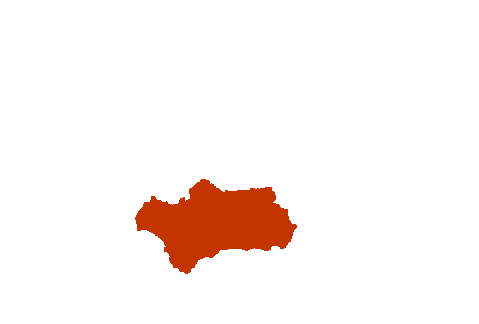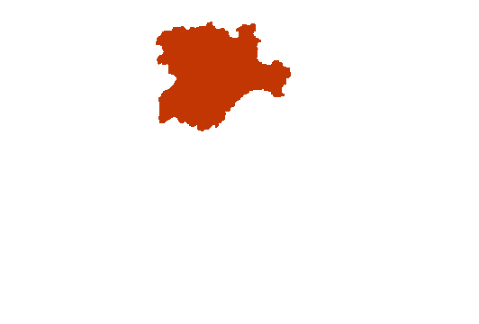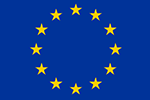Standards and specifications: industrial products
Content
Products subject to harmonised legislation
Conformity assessment in the European Union (EU).
It must be ensured that products comply with certain essential requirements established in harmonised legislation before they are placed on the EU market. This procedure is called a conformity assessment.
In the field of industrial products, compliance with harmonised standards, the references of which have been published in the Official Journal of the European Union (EU), is a way for manufacturers to show compliance with the essential requirements included in EU legislation.
The drafting of harmonised standards is the result of the work of recognised European standardisation bodies such as CEN![]() or CENELEC
or CENELEC![]() , following a ‘mandate’ from the European Commission. The application of harmonised standards in the design and manufacture of goods ensures that they comply with the relevant EU regulations. This is what is known as a ‘presumption of conformity’.
, following a ‘mandate’ from the European Commission. The application of harmonised standards in the design and manufacture of goods ensures that they comply with the relevant EU regulations. This is what is known as a ‘presumption of conformity’.
Harmonised standards that give the presumption of conformity according to applicable legislation.![]()
Harmonised standards can give the presumption of conformity for a series of requirements or for a specific requirement from among those listed in the corresponding legislation. Likewise, in several cases, only some specific sections of a standard are those that provide the presumption of conformity regarding a specific requirement. Therefore, following a harmonised standard in certain cases does not provide conformity regarding the set of essential requirements established in the applicable legislation.
Standardisation at national level
At national level, standardisation is handled by the national standardisation bodies – UNE in the case of Spain – which adopt and publish standards in each country, incorporate all European standards by means of identical national standards and withdraw any national standards that conflict with these.
Do the harmonised standards necessarily apply?
In regulations and guidelines with a new focus, the use of harmonised standards is voluntary. Manufacturers are free to choose other technical solutions to demonstrate compliance with mandatory legal requirements.
If they choose not to use harmonised standards for assessment, manufacturers may demonstrate conformity through reference to other technical specifications (i.e. national standards, non-harmonised European and international standards or their own technical specifications). In that case, they must provide further details in the technical documentation explaining how each product complies with the legal requirements.
Who is responsible for declaring product conformity?
The manufacturer is responsible for declaring that the product meets all the requirements.
Which bodies perform the conformity assessment?
In some cases, the manufacturer may carry out a self-assessment of its own product. In others, manufacturers must rely on the assistance of a conformity assessment body (also known as a notified body). The NANDO![]() page shows the designated notified bodies for each directive and regulation.
page shows the designated notified bodies for each directive and regulation.
If a notified body is required to intervene, the CE marking must be accompanied by the identification number of the notified body.
In Spain, conformity assessment bodies within the scope of European Directives or Regulations are control bodies, in accordance with the Industry Law![]() and the Regulation for Infrastructure for Industrial Safety and Quality
and the Regulation for Infrastructure for Industrial Safety and Quality![]() (Royal Decree 2200/1995). They are accredited by ENAC
(Royal Decree 2200/1995). They are accredited by ENAC![]() within the scope of the Directive or Regulation for which they are going to conduct the conformity assessment, and they are notified by Spain to the European Commission.
within the scope of the Directive or Regulation for which they are going to conduct the conformity assessment, and they are notified by Spain to the European Commission.
Construction products
In terms of European legislation, Regulation (EU) 2024/3110 on construction products (and previously Regulation (EU) No 305/2011
), differs in some ways with respect to other EU directives or regulations. For example, to affix the CE marking to these products, there is no ‘declaration of conformity’ but rather a ‘declaration of performance and conformity’ (DoPC) (previously referred to as ‘declaration of performance’ in the 2011 regulation).
Harmonised zone and harmonised technical specifications
The concept of a harmonised zone defines which construction products require the DoPC and are obliged to bear the CE marking in accordance with this regulation. The harmonised zone covers all products subject to the harmonised technical specifications set out in the regulation.
The harmonised technical specifications for construction products include harmonised standards (only references cited by the European Commission in the Official Journal of the European Union are included). Further information can be found on the Regulation page.
European assessment documents
In cases where a construction product is not covered by harmonised technical specifications, the regulation offers a voluntary route for preparing the DoPC and affixing the CE marking for products that are outside the harmonised zone.
This voluntary route is through the ‘European assessment document’ (EAD), which is drawn up upon the manufacturer’s request by Technical Assessment Bodies (TABs). The references to the EADs adopted by the organisation of TABs (European Organisation for Technical Assessment – EOTA) will be published by the European Commission in the Official Journal of the European Union. Using the CE marking through this route is voluntary.
This means that the fact that an EAD is cited in the OJEU does not entail an obligation for manufacturers to use it. However, if they do choose to use it, they will have to complete the assessment and verification process and put the CE marking on the product, after issuing the DoPC.
Products not subject to harmonised legislation
In the case of products that are not subject to standardised legislation, the specific requirements and, if applicable, the technical specifications to be followed (UNE standards) are recorded in the royal decrees and implementing orders that regulate those products.
For such products, the mandatory official approval thereof was established in the royal decrees that regulate them, although certification of conformity with a standard by AENOR was permitted in some cases.
Subsequently, the figures of product approval, type approval and type registration, which had been established as mandatory in said provisions, were replaced by the certifications of conformity pursuant to regulatory requirements issued by the Control Bodies.
Therefore, requests for certifications must be sent to the Control Bodies that are accredited for this purpose. In cases in which, for the time being, there is still no supervisory body for a certain type of specific product, instead of providing a certificate, you must submit a self-declaration before the competent body of the corresponding autonomous community or autonomous city, which must be available to consumers.
Registers. Standards and requirements for industrial products
See information on: Product standards and requirements. Industrial products.![]()
Information for each Autonomous Community






Andalucía Aragón Asturias, Principado de Balears, Illes Canarias Cantabria Castilla y León Castilla-La Mancha Cataluña Ciudad de Ceuta Ciudad de Melilla Comunitat Valenciana Extremadura Galicia Madrid, Comunidad de Murcia, Región de Navarra, Comunidad Foral de País Vasco Rioja, La










